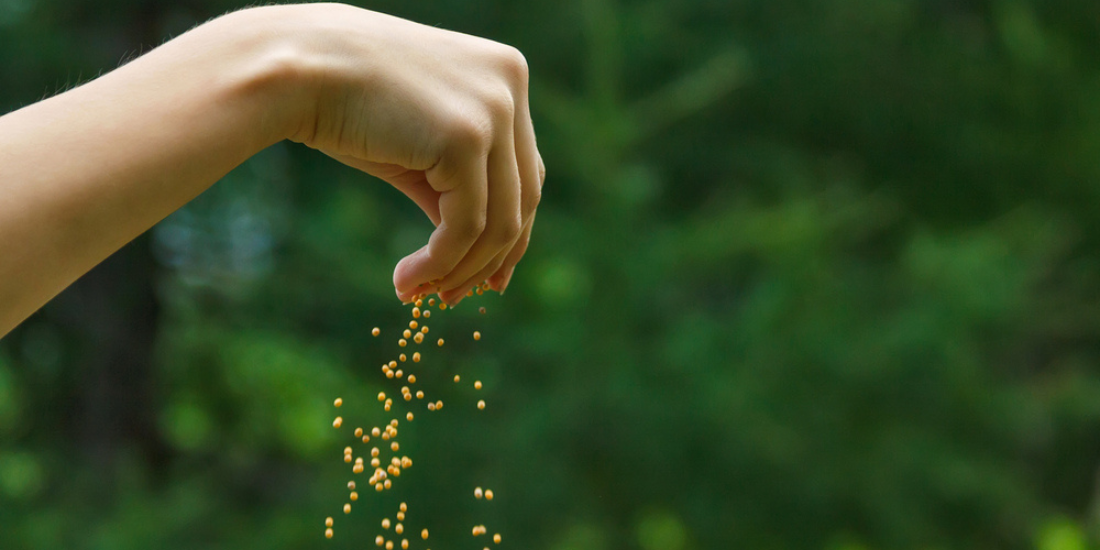Can you just throw wildflower seeds?

So, can I just throw wildflower seeds on my lawn?
The soil needs to be prepared before sowing, so, unfortunately, you can’t just throw wildflower seeds over your lawn if you want the best results from your wildflower meadow. Our advice is to remove existing grasses and leaves from your lawn before putting your wildflower seed down. This will reduce the competition, making it easier for your wildflower seedlings to germinate and grow. You can then follow our how to sow wildflowers guide for a step-by-step process.
Planting wildflower seeds is best done in early spring or in the autumn, but sowing in autumn will give the best results. Planting wildflower seeds during this season gives you the earliest display of wildflowers the following year.
Can I scatter wildflower seeds on grass?
As mentioned previously, it is possible to scatter wildflower seeds on grass and still see results of growth, but you have to realise that competition from other plants already growing in that area makes it hard for wildflowers to grow as best they can. So, if you want to throw wildflower seeds so your wildflowers grow amongst the grasses in your garden, a bit of additional prep work is required to achieve good results.
Our advice is to scarify the area excessively where you want to scatter your wildflower seeds. Make sure the soil is well scarified; this will be evident by the broken-up nature of the soil and visible spaces among the existing grass. This disrupts the existing grasses and plants as much as possible to give the wildflowers a chance to compete against them, and it also helps your wildflowers bed into the soil.
Can I plant wildflower seeds anywhere else?
Wildflowers can grow almost anywhere, but some seed types are better suited to certain conditions than others. This means the wildflower mix you choose will affect how well your meadow blooms. Also, be aware that seed mixes without grasses provide a full floral display, and seed mixes that do contain grass offer the best year-round habitat for a wider range of wildlife.
Below, we have listed a breakdown of our seed mixes and the variety of conditions that they are suited to:
Wildflower Mixes for Normal Soil Types in Non-Shaded Areas:
- Annuals Mix (does not include grass) - contains the nation’s favourite cornfield annuals for a beautiful pop of colour.
- Meadow Magic (does not include grass) - contains a blend of UK native annuals and perennials for a flora-full meadow.
- Flowering Meadow (includes grass) - contains a beautiful mixture of UK native annuals and long-lasting perennials - RHS Plants for Pollinators approved.
- Bees and Pollinators (includes grass) - contains a mixture of RHS Plants for Pollinators approved UK native annuals and perennials expertly picked for their bee and pollinator-attracting abilities.
Seed Mixes Suited to Shaded Areas:
- Shaded Area Wildflowers (includes grass) - contains UK native annual and perennial wildflowers that are shade tolerant and can be typically found growing naturally in forested areas. It also helps to provide a canopy habitat for pollinators and wildlife.
Wildflower Mixes for Problematic Soils:
- Heavy Clay Soil Wildflower (includes grass) - contains UK native annual and perennial wildflowers that thrive in clay soils to provide a year-on-year range of species variety and colour. It also contains complementing arable grasses.
- Sandy Soil Wildflower (includes grass) - contains UK native annual and perennial wildflowers that thrive in sandy soils and contains complementing arable grasses. RHS Plants for Pollinator approved - a great source of food for bees and other pollinators.
What time of year can I plant wildflower seeds?
You can plant wildflower seeds at almost any time of the year. However, as hardy as they are, we recommend to avoid sowing the seeds in winter. If you plant them at any other time of the year, they will begin to bloom in around 60-80 days. So, if you sow the seed in autumn, you will have a blooming wildflower meadow come spring. And if you sow in early spring, you will see colourful blooms by the end of summer.
Planting Wildflower Seeds: Spring vs. Autumn
When the spring sunshine finally breaks through the clouds, it’s hard to resist the call of your garden and the urge to kickstart the planting season. However, sowing wildflower seeds in spring means missing out on an April bloom. Still, it offers unique advantages worth considering.
Advantages of Sowing Wildflower Seeds in Spring
Spring brings improving temperatures and frequent rain showers, creating ideal conditions for seed germination. Your wildflowers will begin to bloom between 60-90 days after sowing, transforming your garden into a colourful haven as summer arrives, attracting vibrant wildlife.
Autumn is often overlooked by many gardeners when it comes to seed sowing, yet it is one of the most beneficial times to plant wildflower seeds!
Why Choose Autumn for Sowing Wildflower Seeds
Successful germination requires light, warmth, and rain – all prevalent during early autumn. These conditions provide ample moisture for seeds to absorb naturally, reducing the need for additional watering.
Benefits of Throwing Wildflower Seeds in Autumn
Opting for an autumn planting schedule typically results in wildflowers beginning to bloom in early spring, ensuring a lush and vibrant display for those warm summer evenings. Additionally, the reduced presence of pests and birds during autumn means your seeds face less damage and stress, contributing to healthier growth.
Embrace the beauty of wildflowers in your garden
The beauty of having wildflowers in your garden is that they are relatively low maintenance. After you have prepared the soil and sowed your wildflower seeds, nature does the rest of the work for you!
We have a wealth of knowledge to share with you when growing wildflowers in your garden, so much so that we have a complete section in our Help & Advice area devoted to wildflowers.
We've linked some advice below for further reading and to help get you started: